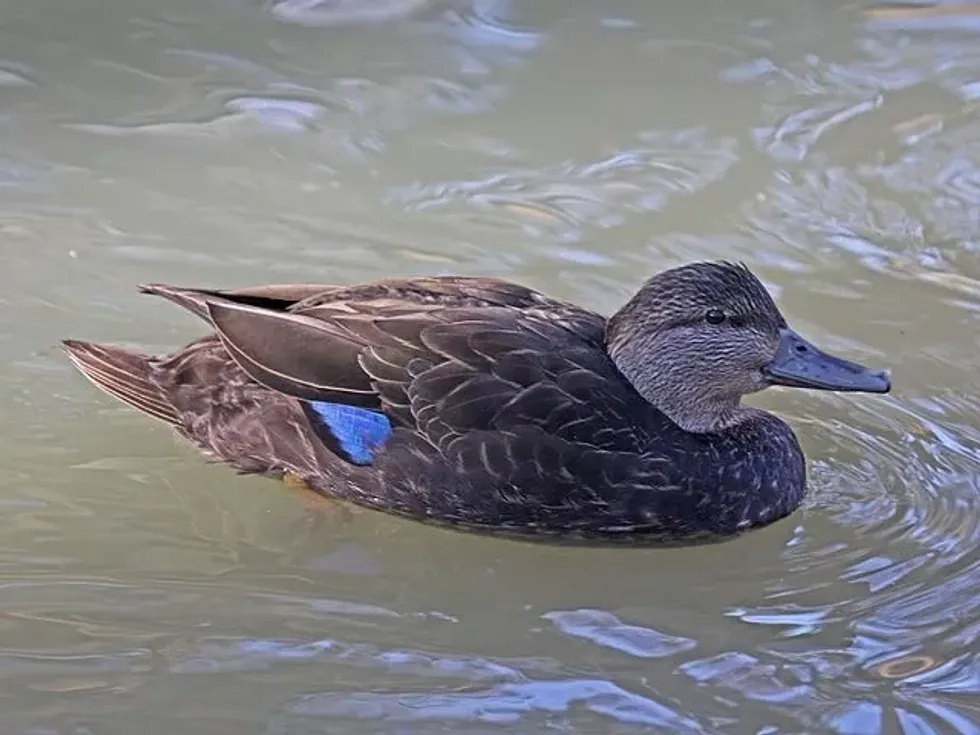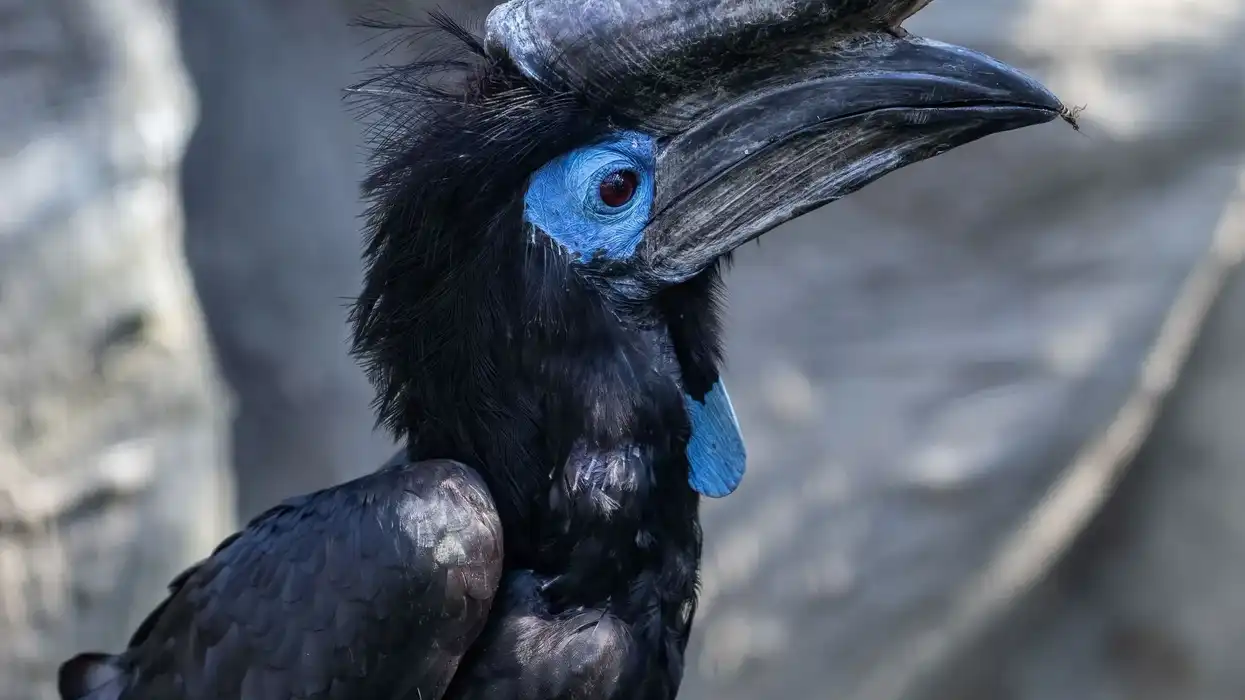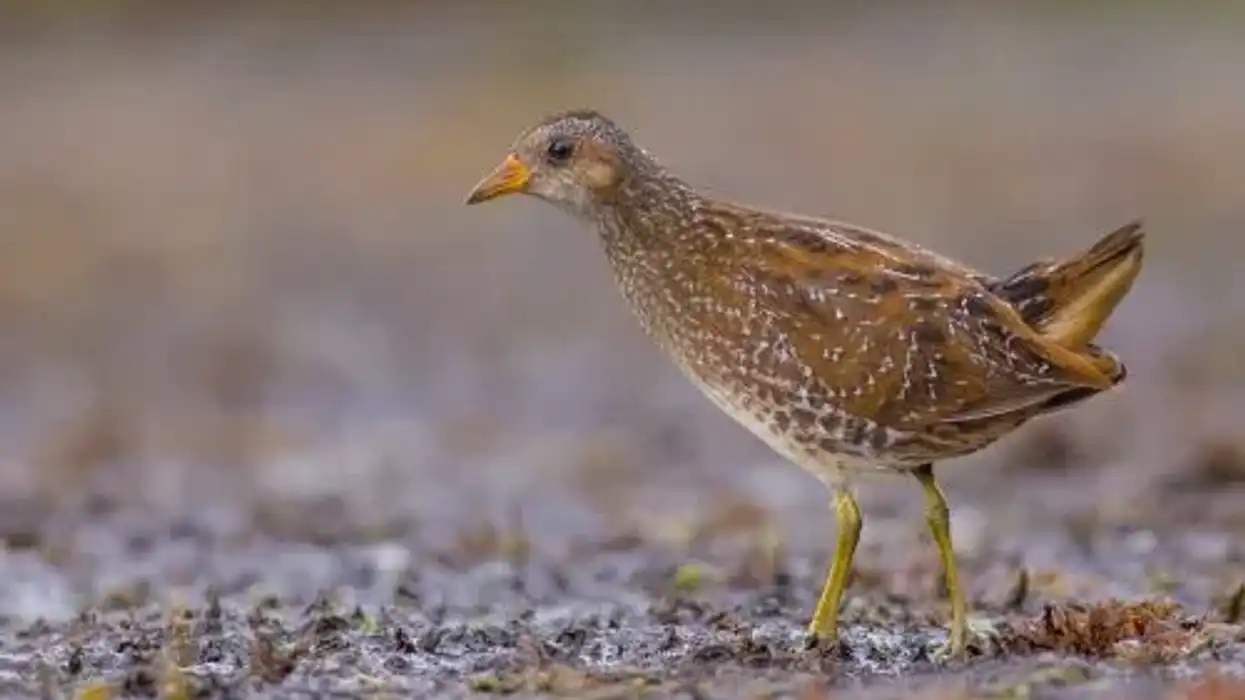If you ever come across a large black duck and think it is a Mallard, then give it a closer look to see any purplish-blue feathers on the rear side of the wings. If you happen to see it then say hi to the American black duck!
The American black duck is a North American duck species. They are similar to the Mallards and often flock together and even interbreed.
It is a large semiaquatic bird that is more brown than black as they appear from far off. They are losing their habitats because of urbanization, and conservation measures must protect their habitats and the decreasing number of their population.
The bird is rather dark in color, more of a dusky brown than black, and is sometimes called a Dusky duck.
The American black duck is partially migratory and migrates during the breeding season. Their breeding habitat ranges from alkaline marshes, acid bogs, and other water bodies and wetlands in northern Saskatchewan to the Atlantic Canadian Provinces, also the Great Lakes in the United States.
They spend the winter season in the east-central United States, especially in coastal areas. A native of North America, the species are also found in Europe.
If learning about ducks amuses you then go through our articles on ducks and the harlequin duck too.
American Black Duck Interesting Facts
What type of animal is an American black duck?
American black ducks are large dabbling ducks and one of the heaviest species of their genus. They are semiaquatic waterfowl shorebirds. The birds are excellent swimmers but slow fliers. They are semi-migratory birds and are sometimes argued as the subspecies of Mallards.
What class of animal does an American black duck belong to?
The American black duck (Anas rubripes) belongs to the Aves class and order Anseriformes, family Anatidae. It is very closely related to the Mallards and extensively interbreeds with the same.
How many American black ducks are there in the world?
According to the What Bird resource, the total population of American black ducks globally is around four million. Still, the population is decreasing due to various reasons like urbanization, pollution, and hunting, and conservation measures are required.
Where does an American black duck live?
The American black duck lives in the temperate zone. They are found in and around the water bodies like lakes, rivers, estuaries, and wetlands.
These North American birds are found all around the year in the salt marshes from the Gulf of Maine to coastal Virginia. A few birds are also seen in glacial kettle ponds surrounded by bog mats on the Atlantic coastal line. During the winter season, they are found from Nova Scotia to Texas.
What is an American black duck’s habitat?
These North American birds are found in both fresh and brackish wetlands but prefer freshwater impoundments. It is associated with tidal marshes.
The American black duck habitat includes the edges of ponds and rivers lined with speckled alder, estuaries, and agricultural marshes and fields. They take shelter in case of any disturbance, and hence their habitat is around shallow water with sedges and reeds near mixed hardwood forests and forest swamps.
Who do American black ducks live with?
American black ducks live in small groups or on their own. Other similar species classified with American black ducks similar classifications are Mallard, Black scoter, Mottled dock, Gadwal, and Surf scoter, and most often flock together for forage.
How long does an American black duck live?
An American black duck has a lifespan of more than 20 years in the wild. They migrate to the same marshes every year during winters and do not cross their forage ranges even if the lakes are frozen as they do not go beyond what is known as the American black duck range.
How do they reproduce?
The species is monogamous and reproduces through sexual reproduction. In the winter season, the court migrates to American black duck nesting grounds for breeding in spring.
The female American black duck chooses the nesting site and builds the nest, while the male American black duck protects the territory. Females lay around 6-14 eggs.
American black duck egg is oval-shaped. The American black duck eggs hatch in under a month, and hatchlings are dry and ready to forage within a few hours. They fledge around their mother in shallow water for six to eight weeks and are independent after that.
The male leaves the nest to molt halfway through the incubation period. They are also known for interbreeding with the Mallards.
What is their conservation status?
The American black duck’s conservation status is classified as Least Concern (LC) on the IUCN Red List. But their numbers are decreasing due to their habitat loss and overhunting.
American Black Duck Fun Facts
What do American black ducks look like?
The bird is not black but appears so from a distance. The duck’s body is dark brown and lighter grey in the neck and head areas. The dark plumage has a purplish-blue patch, and the bottom side of the body is white.
The bill of this species is olive-yellow. And it dabbles in the water for its prey. Females are lighter than males.
How cute are they?
It is a lovely bird found in abundance in the eastern American coast and brackish wetlands, and adjacent regions. The species is semi-aquatic and loves spending time in the waters.
The feathers on the wing have a purple tinge with a white underside that gives this bird a beautiful look like these dark birds when in flight. Their olive-yellow bill and dark eyes, too, are its beautiful features.
How do they communicate?
The American black duck communicates with vocal cues. They make long sequences of quacks, and during mating season, males make unique ‘kwek’ type sounds to communicate with its partner. They also communicate by touching each other, taming the wings of each other with their bill.
How big is an American black duck?
An American black duck grows between 19-22 in (54–59 cm) long and almost 13-15 in (33-43 cm) tall. They are hefty birds almost the same size as that a Mallard, with a wingspan between 35–37 in (88–95 cm).
How fast can an American black duck fly?
An American black duck can fly at a maximum speed of 40 mph (64.3 kph). They are heavy birds, and their flight is slow, and migrate during the breeding season. But they are great swimmers.
How much does an American black duck weigh?
An adult American black duck weighs between 1.6–3.6 lb (720–1,640 g). They are heavy birds and the heaviest ones in their genus regarding their body weight and built.
What are the male and female names of the species?
The American black duck male and female species don't have any special names. A male is called an American black duck drake, and a female is called an American black duck hen. The group is called a brace, bunch, flock, paddling, or raft.
What would you call a baby American black duck?
Like all ducks, a baby American black duck is called a duckling. Once out of their eggs, they are called hatchlings. Foraging little invertebrates with their brood, the young are called fledglings.
What do they eat?
These black ducks are omnivorous. They feed on aquatic plant species and seeds—the young start eating small invertebrates after they hatch and later prey on insects, fish, and snails. Adults dabble in water for fish and graze on land to eat plant seeds and roots.
Are they friendly?
They are very friendly ducks and most often tend to hide away from any disturbances.
Would they make a good pet?
These black ducks are very inexpensive and easy to keep pets if they have enough space. They are semiaquatic and love to spend time in the water, which is an important thing to keep in mind for those who want to own one.
Did you know...
The bird is vulnerable to lead poisoning, known as plumbism, because of its foraging habits.
Humans are a threat to their population, but snakes, skunks, crows, and raccoons also prey on them.
Where can you buy an American black duck?
You can buy these black ducks from nearby pet stores or from farm owners who rear them for business. Be sure to identify this bird because it often interbreeds with a Mallard, and you can find a hybrid of the two.
How to identify an American black duck?
They are large ducks very similar to the Mallard but their body is darker, and they are heavy birds. They have distinctively paler gray necks and heads with olive-yellow bills. When in flight, you can see the underside of the wing, which is black, and the secondary is iridescent purple.
Here at Kidadl, we have carefully created lots of interesting family-friendly animal facts for everyone to discover! Learn more about some other birds including the crested duck, or Muscovy duck.
You can even occupy yourself at home by drawing one on our American black duck coloring pages.










